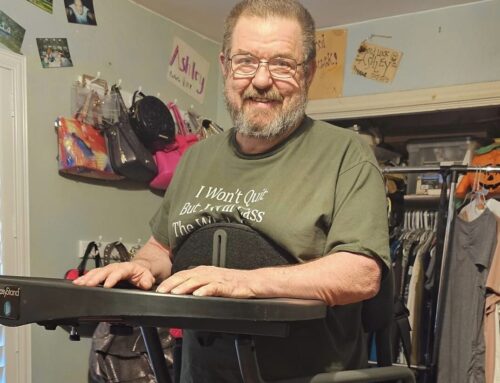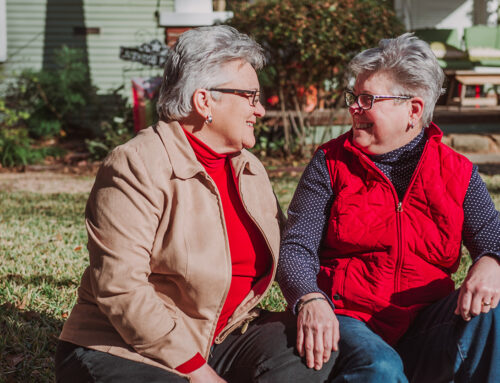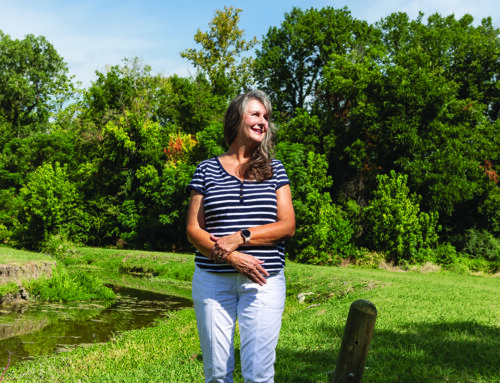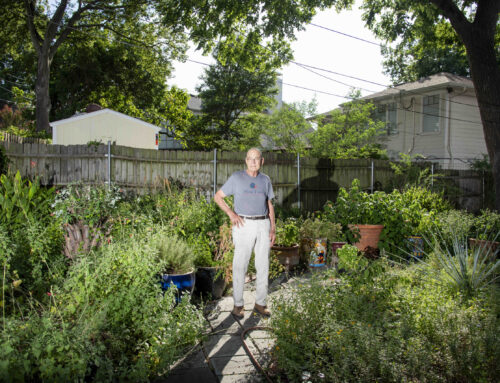It’s that time of the year again – flea season – and after another mild winter the problem seems even worse.
Fleas spend only five to 10 percent of their lives on animals. The rest of the time they lie in wait on your floor and furniture. Their ability to jump nine inches straight up or five feet sideways makes your ankle an easy target. Enough nipping fleas around your house can cause you to forego all your good organic intentions, go out and buy the harshest chemicals around to blast the little pests. But there are other, more earth friendly remedies.
The first step to flea control is with your animal. Use herbal shampoos or mild non-toxic soaps for bathing and leave on your pet for five minutes before rinsing. You can remove the pests with a flea comb and drown them in soapy water. Between baths, try non-toxic flea powders which include pennyroyal, eucalyptus, or rosemary.
Herbal flea collars are available and are a good alternative to chemical flea collars, which contain many toxic substances. If you use a chemical collar on your pet, it is constantly breathing fumes. At mealtime, try adding brewer’s yeast, garlic, or Vitamin B1 to your pet’s food to repel fleas.
Diatomaceous earth is available at organic nurseries and can be used on your pets, in your home, and on your yard. Don’t buy the swimming pool variety. It works by piercing the protective coating of the insects and, in a few hours, they dry out and die. Try using a salt shaker to evenly distribute the powder on your pet. Comb it through to make sure it gets down to the skin. Be very careful around your pet’s eyes, nostrils, and mouth. In your home, sprinkle it under the couch and cushions and lightly dust your carpets and floors. Repeat the application in seven days, and again in seven more days.
For yard treatments, mix two tablespoons of Diatomaceous earth with one gallon of water and spray your outdoor area. Follow through with another application in seven days, and again in seven more days.
Other alternatives for home treatment include boric acid sprinkled on carpets and, for heavy infestations, d-limonene (Demize or Flea Stop) and methoprene (Precor or Alter) on carpets and furniture.
Outdoor treatment can also include spraying a mild soap and water solution mix at a ratio of five parts soap to 95 parts water. Try a vegetable-based soap or a pet shampoo containing d-limonene and linalool. Soaps work on fleas by dissolving the outer waxy cuticle of the insect. You can also spray beneficial nematodes in your grass.
Frequent vacuuming is a must to eliminate flea eggs. Don’t leave the bag inside the vacuum cleaner since the eggs inside can hatch and reinfest your house. nstead of tossing the bag or trying to remove its contents, put the bag inside a dark plastic trash bag and place it in the sun for a few hours. The heat will kill the fleas and you can reuse the bag.
Some of these organic ideas were taken from a pamphlet of Howard Garrett’s called “Basic Organic Program”. Other ideas were obtained from Mother Nature Garden Center. You can visit the information desk at Whole Foods for booklets entitled “Pest Free Pets”, “Pest Free Home”, and “Pest Free Yard”.
Nurseries that feature organic materials include Mother Nature, 2001 Skillman St.; North Haven Gardens, 7700 Northaven; Texas Blooms Organic Gardens, 5016 Miller Ave. at Henderson; and Walton’s Gardens, 8462 Garland Road.
Curbside Confusion
Some residents in a neighborhood bordering the City’s Sanitation District 4 accidentally received information on the curbside pickup recycling program when it began months ago. The information was intended only for residents of District 4, which is serviced by Laidlaw Waste Systems, but was erroneously included in the Water Utilities bill of some residents in District 5.
Part of District 5 was on the original pilot program, but was not included in the curbside program. The curbside program currently in effect for District 4 is serviced by Laidlaw, not City of Dallas Sanitation trucks.
This is an example of how implementing the curbside program by districts can cause confusion. The system being used in District 4 (same collection trucks, blue bags for recycling) should be activated citywide. There are many advantages to beginning a citywide program over adding this service one district at a time.
If you support a citywide curbside pickup program, don’t forget to let your councilmember know. The success of District 4’s program will increase when the service is available to everyone, and confusion will decrease.





